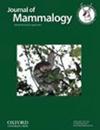利用纳米孔自适应采样技术快速鉴定哺乳动物粪便样本的分子物种
IF 1.6
3区 生物学
Q2 ZOOLOGY
引用次数: 0
摘要
准确的物种分类鉴定对哺乳动物研究至关重要。尽管如此,快速准确地鉴定隐蔽的、研究不足的和难以捉摸的哺乳动物仍然具有挑战性。传统的线粒体基因条形码是分子鉴定的标准,但需要耗时的湿实验室方法。纳米孔测序数据在生物信息学方面的最新进展为非侵入性和野外鉴定哺乳动物提供了令人兴奋的机会。纳米孔自适应采样(NAS)是一种无需聚合酶链式反应(PCR)的方法,可根据用户指定的参考数据库对DNA区域进行选择性测序。在这里,我们利用 NAS 丰富哺乳动物线粒体基因组测序,以确定物种。我们对 9 种哺乳动物的粪便 DNA 提取物进行了测序,其中几种是与明尼苏达部落合作采集的,以证明 NAS 条形编码非侵入性样本的实用性。通过与整个美国国家生物技术信息中心哺乳动物线粒体参考基因组数据库进行映射,并对高度相似的匹配进行生物信息分析,我们成功地对所有粪便样本进行了物种鉴定。在 9 个物种鉴定中,有 8 个与之前基于 PCR 或动物/粪便外观的鉴定结果相吻合。对于第九个物种,我们的基因数据表明是源于原始研究的错误鉴定。我们的方法具有广泛的应用前景,特别是在基于野外的野生动物研究、保护、疾病监测和野生动物贸易监控方面。对明尼苏达部落来说,最重要的是入侵物种的监测、检测和确认,因为气候影响会导致生物多样性的变化和物种分布的转移。本文介绍的快速评估技术将非常有用,因为本地物种和入侵物种的新引进和范围扩大可能首先通过粪便等迹象的存在而不是直接观察来发现,这对长期人手不足的部落自然资源机构很有帮助。本文章由计算机程序翻译,如有差异,请以英文原文为准。
Rapid molecular species identification of mammalian scat samples using nanopore adaptive sampling
Accurate taxonomic species identification is essential to the study of mammals. Despite this necessity, rapid and accurate identification of cryptic, understudied, and elusive mammals remains challenging. Traditional barcoding of mitochondrial genes is standard for molecular identification but requires time-consuming wet-lab methodologies. Recent bioinformatic advancements for nanopore sequencing data offer exciting opportunities for noninvasive and field-based identification of mammals. Nanopore adaptive sampling (NAS), a polymerase chain reaction (PCR)-free method, selectively sequences regions of DNA according to user-specified reference databases. Here, we utilized NAS to enrich mammalian mitochondrial genome sequencing to identify species. Fecal DNA extractions were sequenced from 9 mammals, several collected in collaboration with Minnesota Tribal Nations, to demonstrate utility for NAS barcoding of noninvasive samples. By mapping to the entire National Center for Biotechnology Information mammalian mitochondrial reference genome database and bioinformatically analyzing highly similar matches, we successfully produced species identifications for all fecal samples. Eight of 9 species identifications matched previous PCR or animal/fecal appearance-based identifications. For the ninth species, our genetic data indicate a misidentification stemming from the original study. Our approach has a range of applications—particularly in field-based wildlife research, conservation, disease surveillance, and monitoring of wildlife trade. Of importance to Minnesota tribes is invasive species monitoring, detections, and confirmation as climate impacts cause changes in biodiversity and shifts in species distributions. The rapid assessment techniques described here will be useful as new introductions and range expansions of native and invasive species may first be detected by the presence of signs such as scat rather than direct observations and will be helpful for chronically understaffed tribal natural resources agencies.
求助全文
通过发布文献求助,成功后即可免费获取论文全文。
去求助
来源期刊

Journal of Mammalogy
生物-动物学
CiteScore
3.30
自引率
5.90%
发文量
106
审稿时长
4-8 weeks
期刊介绍:
Papers are published on mammalian behavior, conservation, ecology, genetics, morphology, physiology, and taxonomy.
 求助内容:
求助内容: 应助结果提醒方式:
应助结果提醒方式:


